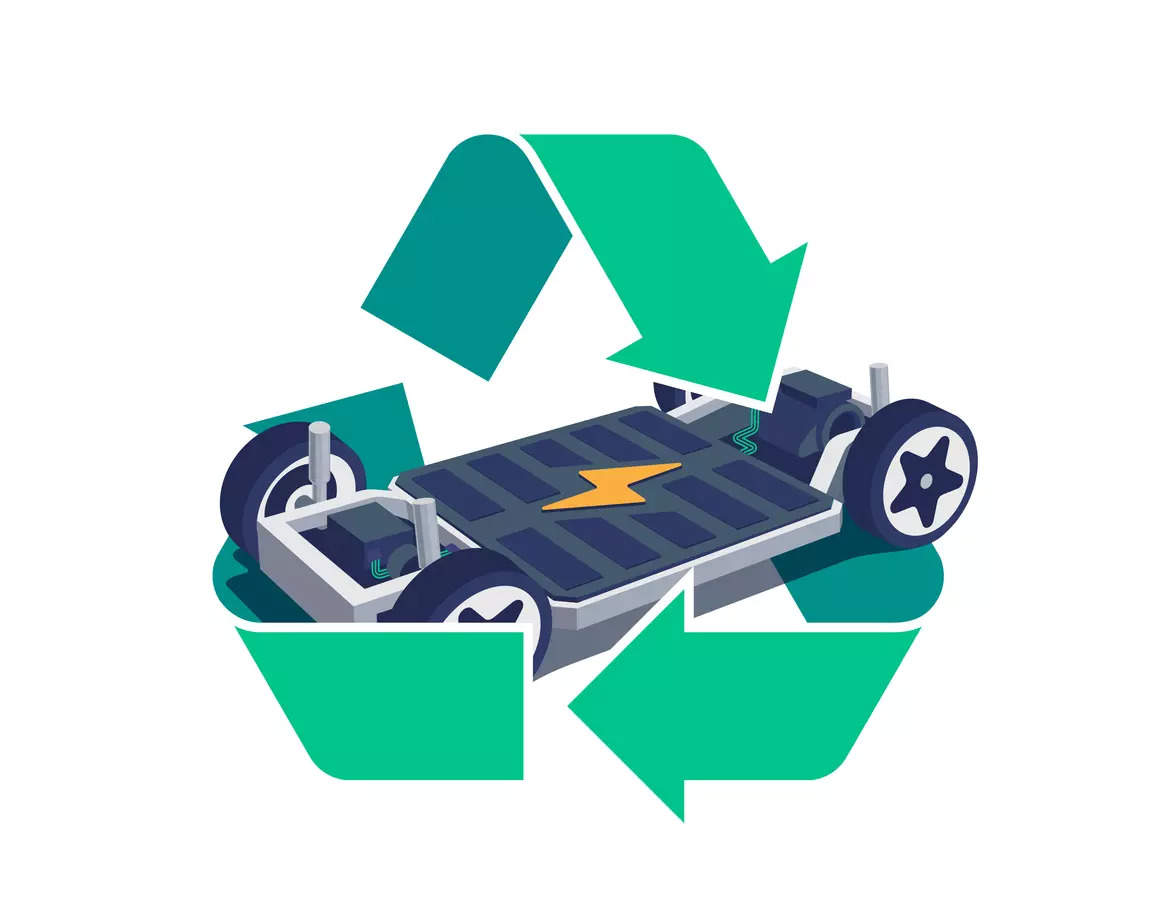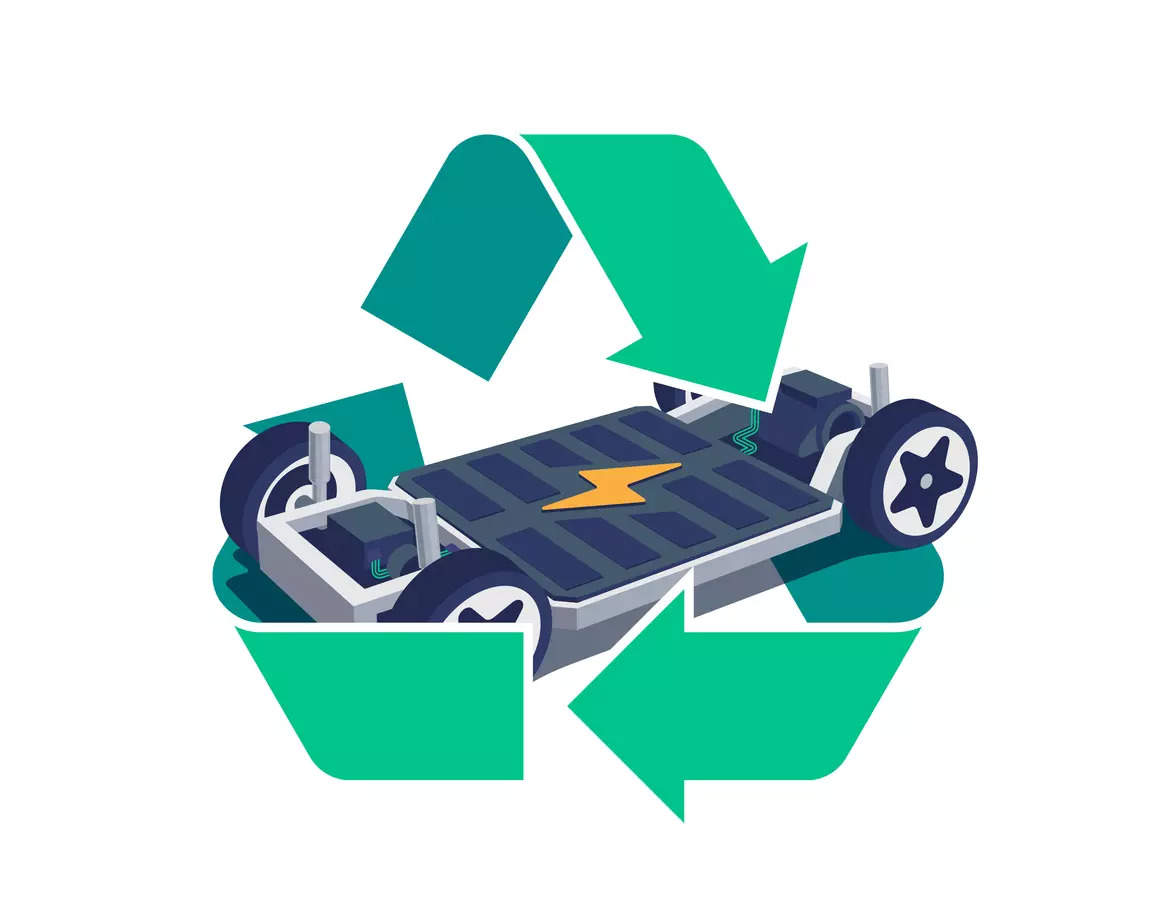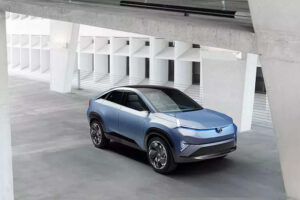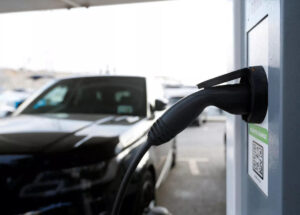
With increasing EV sales, demand for cathode material will double from 2025 to 2030. From 2025 onwards, there will be a significant amount of end-of-life EV batteries. This represents a huge opportunity for Indian Electric Vehicles Original Equipment Manufacturers (OEMs). By investing in Indian recycling partners today, OEMs stand to benefit when the earlier generation of EV batteries reaches the end of its life.
Benefits of Investing for OEMs.
Investing in recycling partners will help Indian OEMs take advantage of the upcoming mass availability of valuable end-of-life Li-ion batteries. Recycling partners can help OEMs reuse rather than discard batteries after their short lives. Also, recycling partners can harness the energy trapped in discarded batteries, and subsequently, refurbish the batteries quickly.
Also, investing in recycling partners will help OEMs expand their production capacity. Retired batteries can serve as the most important source of material for the subsequent generation of batteries.
Notably, recycling is essential because the rapid growth of the EV industry has brought to light a significant challenge, the need for sustainable and responsible sourcing of critical materials used in EV batteries. By the end of this decade, increasing global EV sales will put considerable pressure on the supply of critical battery raw materials such as cobalt, nickel and lithium. Much of this demand for critical battery raw materials can be met by recycling the earlier generation of batteries .
Perhaps for OEMs, by sourcing from recycling partners, they can mitigate disruptions caused by geopolitical tensions, trade disputes, and natural disasters. Sourcing from recycled materials – urban mining – will help create a domestic supply chain that’s not reliant on mining in another country. A domestic supply chain will help OEMs guard against potential financial losses that often occur when the price of metals used in battery production changes unexpectedly. It will also ensure the long-term availability of critical minerals and sourcing materials and reduce reliance on unsustainable mining practices, thereby minimizing the adverse impact of mining, such as deforestation, pollution, and human rights abuses. To create such a robust supply chain, OEMs should do the following.
Investing in recycling partners
OEMs should work closely with recyclers to help develop batteries that are designed for recycling and second life. Such innovations will lead to financial benefits for recyclers that are ultimately passed on to OEMs and end consumers.
Investing in automation is also essential. Today, retired batteries are dismantled using manual labour which is time-consuming, and labour-intensive process. Automation will make dismantling batteries easy and fast and speed up the building of second-life products. It will scale recycling operations, allowing recyclers to handle larger volumes.
There are ongoing discussions between Indian recyclers and automation providers to develop solutions for the recycling industry. OEMs can speed up the adoption of automation by recyclers. When OEMs agree to supply large quantities of identical retired batteries to recyclers, the latter will quickly and confidently adopt automation.
OEMs should also invest in technologies like radio-frequency identification (RFID) tagging. Using RFID technology, OEMs can track and trace individual battery packs as they move upstream along the supply chain. Today Recyclers are using EPR solutions and geo tagging for tracing each battery pack.Consequently, the collection process will become streamlined, and labour costs will fall.
Recyclers buoyed with OEM’s backing will invest more money in R&D in developing indigenous technologies which can compete with the world. Recyclers will be able to take that confidence into the next subsequent steps of making precursor and ultimately cathode and anode active material.
Investments in The Internet of Things, Digital Product Passports and Artificial Intelligence are also necessary. These technologies will enable transparent, efficient, and adaptable supply chains that support circular practices. Advanced technologies, including machine learning algorithms and artificial intelligence (AI), will help evaluate the state of used batteries quickly and accurately.
Crucially, OEMs must foster a mindset shift. From viewing waste and end-of-life products as problems to seeing them as opportunities for value creation and innovation.
Leading the EV Era
It is estimated that by 2050, 75% of new vehicles sold will be EVs. For the Indian automotive industry, EVs present a huge opportunity. The country’s automobile manufacturers were late entrants to the internal combustion engine (ICE) era. Yet, they have a chance to become leaders in the EV era. For OEMs, investing in recycling partners is essential to making this a reality.
(Disclaimer: Gaurav Dolwani is Founder and CEO of LICO Materials. Views are personal.)
To learn more about the electric vehicle ecosystem and meet the key industry leaders, click here.






